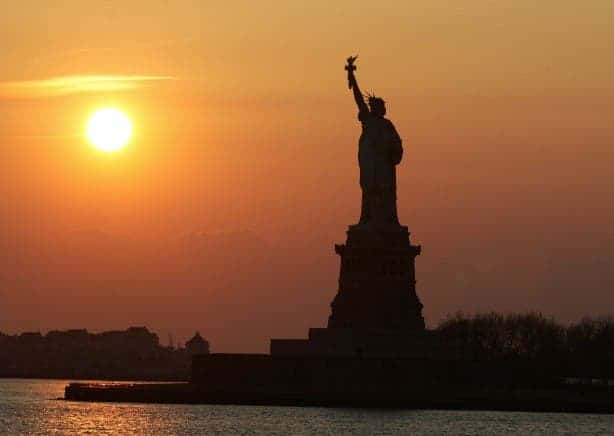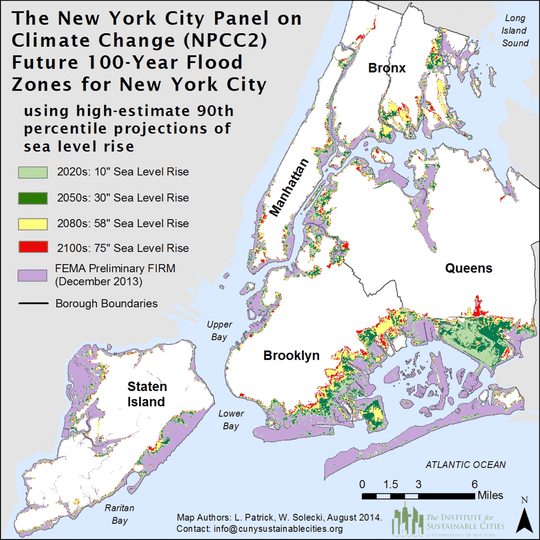The most populated city in the United States is already experiencing its fair share of floods, hurricanes and heat waves, but these will only intensify in years to come. According to the New York City Panel on Climate Change by the 2080s there could be an 8.8-degree Fahrenheit rise in temperature from 1980s levels and as many as six heat waves a year or three times as many as in the 1980s. Sea levels could also rise by as much as six feet, pressing the municipality for swift adaptive measures.

Here are the highlights from the report:
- “Mean annual precipitation has increased by a total of 8 inches from 1900 to 2013. Future mean annual precipitation is projected to increase 4 to 11 percent by the 2050s and 5 to 13 percent by the 2080s, relative to the 1980s base period.”
- “Future mean annual temperatures are projected to increase 4.1 to 5.7 degrees F by the 2050s and 5.3 to 8.8 degrees F by the 2080s, relative to the 1980s base period.”
- “Sea levels have risen in New York City 1.1 feet since 1900. That is almost twice the observed global rate of 0.5 to 0.7 inches per decade over a similar time period. Projections for sea level rise in New York City increase from 11 inches to 21 inches by the 2050s, 18 inches to 39 inches by the 2080s, and, 22 inches to 50 inches, with the worst case of up to six feet, by 2100.”
City authorities acknowledged the report – it’s not like they weren’t aware of the situation before. The municipality is currently making efforts to both curve emissions and enforce adaptive measures, particularly against floods. These include design work on a flood protection system for Manhattan’s Lower East Side and investments to protect vulnerable waterfront communities, among other programs. The city has also coated over 6 million square feet of roofs with reflective paint to cool buildings and combat urban heat island effect.
[ALSO SEE] Fracking banned in New York state
“The task at hand is daunting — and that is why we’re making an unprecedented commitment, with a sweeping plan to reduce emissions 80 percent by 2050, and a comprehensive, multi-layered resiliency plan that is already making neighborhoods safer,” New York City Mayor Bill de Blasio said in a press statement.
“It is virtually certain that sea level rise alone will lead to an increased frequency and intensity of coastal flooding as the century progresses,” the authors wrote.

If the higher end of the panel’s predictions come true, this means twice as much of New York City will lie within the 100-year flood plain in 2100, as compared to 2013. About 400,000 New Yorkers live within the current 100-year flood plain, which is more than any other U.S. city, including New Orleans. By 2016, people living within the FEMA zones will be required to buy flood insurance if holding mortgages from government-backed lenders.
“Sea level rise is an extremely challenging problem that requires both greenhouse gas emissions reduction and adaptation measures to successfully protect vulnerable coastal areas,” Princeton University professor Michael Oppenheimer, who contributed to the report, told The Huffington Post. “This report is a model of how technical information can support decision-making.”
“The report blends cutting-edge science with presentation of the information to policy makers in a risk-based framework so they are in a position to use it to make key judgments about how to protect a city from climate change,” Oppenheimer said.
The New York City Panel on Climate Change was introduced by former NYC mayor Michael Bloomberg in 2008 as part of the city’s long-term sustainability plan.


